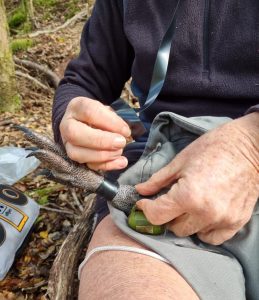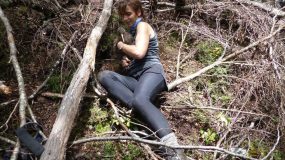Monitoring kiwi, checking their health and retrieving chicks from wild nests for rearing at the Opouahi kiwi crèche are all important parts of the SOKK project.
But how do you find your kiwi?
Chick timers are a ‘smart’ kiwi radio transmitter developed by a couple of clever engineers in Hawke’s Bay. They were sick of doing endless night fieldwork checking kiwi nests.
John and Al of Wildtech took a standard kiwi chick tx (short for transmitter) with a mercury switch inside it and added some software.
The mercury switch detects movement and the software basically counts how often the kiwi moves his leg. High counts mean lots of movement. The software then interprets the trends in movement and sends out a coded signal in a data stream that we can listen in to (using our kiwi radio monitoring equipment) as a series of beeps.
We can tell from different strings of beeps how active the kiwi is. The beeps indicate, for example, when a kiwi is nesting or looking for new territory. We put the timers only on the males, because it’s the dads that incubate the eggs after mum has made a huge effort to lay them.
When a dad is nesting (and therefore more-or-less immobile), his daily activity usually lasts three to four hours. This is the time it takes him to sneak off the nest for a feed each night. He usually nests for 80 days – the longest of any bird species.
The chick timers also tell us when a chick has hatched and is ready to be moved to the kiwi crèche. They save masses of fieldwork time that was previously needed to visually check kiwi, to see if they were nesting. The transmitters also mean the kiwi are far less likely to be disturbed by whoever is monitoring them, because we can do it from a distance.
The transmitter is attached above the ‘knee’ joint like a bracelet. Each transmitter is the kiwi’s individual radio station. The bracelets are light and strong, and are attached with a baby band, like those used in hospitals, reinforced with a few rounds of electrical tape. The kiwi soon gets used to the gadget.
We follow a kiwi’s movements by tuning into his radio channel using a directional antenna (similar to an old TV aerial) to locate him. In the early days, only a few signal codes were used, but with ongoing development we have 16, each indicating some aspect of the bird’s behaviour.
Despite these advances in technology, monitoring kiwi still takes a lot of physical effort – but who knows? Perhaps one day, we’ll be using drones to track them down!









